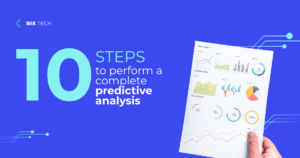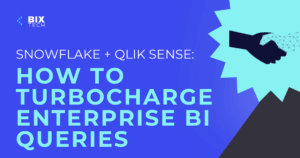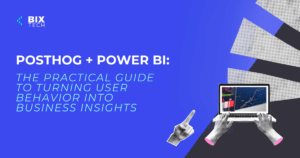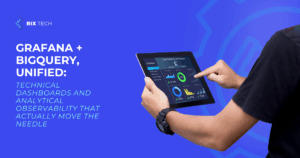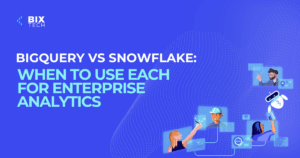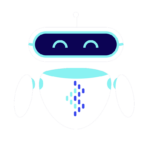14 Game-Changing Software Development Trends Shaping 2025

Sales Development Representative and excited about connecting people
As we approach the middle of 2025, the software development landscape is evolving at a breakneck pace. Companies worldwide are on the hunt for innovative strategies to keep up, whether it’s adopting advanced artificial intelligence (AI) tools, securing digital transactions through blockchain, or embracing cloud-native architectures. The race to deliver seamless digital experiences, optimize operations, and delight customers is redefining how software is built and delivered.
Let’s dive into 14 transformative software development trends you can’t afford to ignore in 2025. Discover practical examples, industry insights, and actionable takeaways to future-proof your business.
1. AI-Powered Tools: From Code Creation to Delivery
Artificial intelligence is no longer a futuristic dream—it’s a daily reality for development teams. Modern AI tools are automating everything from coding to deployment, freeing developers to focus on creative, high-impact work.
Real-World Examples
- GitHub Copilot: Assists with real-time code suggestions, reducing repetitive work for developers.
- Test.ai and Applitools: Integrate into CI/CD pipelines, using AI to predict bugs and ensure smoother releases.
- AIOps Platforms: Proactively monitor infrastructure, detect anomalies, and recommend fixes—minimizing downtime and manual intervention.
Case Study
A leading fintech company integrated AIOps into their cloud infrastructure. The result? A 40% reduction in incident response times and improved system reliability.
Actionable Takeaways
- Experiment with AI-powered code assistants to boost productivity.
- Integrate automated testing tools into your pipeline for faster, error-free releases.
- Explore AIOps solutions to proactively manage your IT infrastructure.
For a deeper dive on how AI is transforming business operations, check out our article on AI-driven innovations in software development.
2. Low-Code and No-Code Platforms: Accelerating Time-to-Market
Low-code and no-code development platforms are democratizing software creation. By enabling users to build applications visually with pre-built components, these tools allow non-technical teams to automate workflows and respond to market needs quickly.
Practical Examples
- Microsoft Power Apps: Offers drag-and-drop interfaces for business process automation.
- Bubble: Enables startups to launch MVPs without writing extensive code.
Important Note
While low-code solutions speed up prototyping and innovation, they’re not substitutes for expert developers—especially for complex, scalable, or highly secure systems.
Actionable Takeaways
- Identify repetitive workflows that can be automated with low-code tools.
- Use no-code platforms for rapid prototyping and validation.
- Balance the use of these tools with professional development expertise for core systems.
Discover more about building and validating new ideas with AI in our guide to exploring AI PoCs in business.
3. The Reign of Python and JavaScript Continues
When it comes to versatility and scalability, Python and JavaScript remain the backbone of modern development.
Python
- Strengths: Simplicity, vast libraries, and suitability for AI, machine learning, automation, and data science.
- Frameworks: TensorFlow, Pandas, Flask—enabling everything from data analytics to web apps.
Example: A logistics startup used Python and Pandas to optimize delivery routes, cutting transportation costs by 15%.
JavaScript
- Strengths: Powers modern web interfaces, PWAs, and both client-side and server-side applications.
- Frameworks: React, Node.js, Angular—enabling dynamic, real-time web experiences.
Example: An e-commerce brand migrated to a React-based frontend, improving site speed and boosting conversions by 20%.
Actionable Takeaways
- Invest in Python for data-heavy or AI-driven projects.
- Use JavaScript for interactive, scalable web applications.
- Encourage teams to stay updated on the latest libraries and frameworks for both languages.
4. Rising Stars: Go, Rust, and Kotlin
Emerging programming languages are stepping into the spotlight, addressing challenges that legacy languages can’t always solve.
Go (Golang)
- Best For: Cloud computing, microservices, and scalable backend systems.
- Notable Use: Docker and Kubernetes are written in Go, making it essential for cloud-native development.
Rust
- Best For: Systems programming with speed and memory safety.
- Use Cases: Blockchain, game engines, and secure embedded systems.
Kotlin
- Best For: Android mobile development, and increasingly for backend services.
- Strengths: Concise syntax, Java interoperability, and growing support for enterprise software.
Actionable Takeaways
- Evaluate new language adoption based on project requirements (performance, safety, or scalability).
- Upskill teams in Go, Rust, or Kotlin for future-proof development.
- Consider these languages for new projects that demand modern architecture and security.
5. Cloud-Native Development & Microservices: Built for Scale
Cloud-native applications and microservices architectures deliver the agility, reliability, and scalability needed for today’s digital businesses.
Key Benefits
- Seamless Scaling: Automatically adjust resources to match demand.
- Resilience: Isolate failures and improve uptime.
- Faster Deployment: Continuous integration and delivery pipelines speed up updates.
Example
A SaaS provider migrated to a microservices architecture, which reduced downtime by 50% and enabled weekly feature releases instead of quarterly.
Actionable Takeaways
- Adopt containerization (like Docker) and orchestration (like Kubernetes) for flexible deployments.
- Break monoliths into microservices to accelerate development cycles.
- Prioritize observability and monitoring in distributed systems.
Explore more on the topic in our article on cloud-native development trends.
6. Blockchain Technology: Securing Digital Transactions
Blockchain is emerging as the go-to technology for secure, transparent transactions—across industries from finance to supply chain.
Use Cases
- Smart Contracts: Automate agreements with tamper-proof logic.
- Supply Chain Tracking: Enhance transparency and reduce fraud.
- Digital Identity: Improve security and control over personal data.
Example
A global logistics firm implemented blockchain for tracking shipments, reducing paperwork and preventing counterfeiting.
Actionable Takeaways
- Assess if blockchain can add value to your business processes.
- Start with small-scale pilots before full-scale adoption.
- Stay updated on regulatory and compliance considerations.
7. Ethical AI and Responsible Tech
With growing AI adoption, ethical considerations are paramount. Businesses are focusing on transparency, bias mitigation, and explainability in their AI systems.
Practical Steps
- Implement fairness audits for AI models.
- Use explainable AI tools to interpret decisions (e.g., SHAP values).
- Create governance frameworks for responsible AI usage.
Example
A healthcare provider used explainable AI models to ensure diagnostic recommendations were fair and understandable, improving patient trust.
Actionable Takeaways
- Integrate ethical reviews into your AI development lifecycle.
- Train teams on responsible AI practices.
- Use transparent, interpretable models in sensitive applications.
For a practical perspective on AI interpretability, check out our article on explaining SHAP values.
8. DevOps and Continuous Everything
DevOps culture and continuous integration/delivery (CI/CD) pipelines are now industry standards, accelerating software releases and improving quality.
Key Practices
- Automation: From testing to deployment, automation reduces errors and speeds up delivery.
- Collaboration: Developers, QA, and operations work in sync.
- Feedback Loops: Rapid feedback enables quick course correction.
Example
A retail company implemented CI/CD workflows and reduced their release cycle from weeks to days, leading to faster customer feedback and higher satisfaction.
Actionable Takeaways
- Invest in robust CI/CD tools.
- Encourage cross-functional collaboration.
- Automate repetitive tasks wherever possible.
9. Edge Computing: Processing Data Closer to the Source
Edge computing is gaining traction as businesses demand real-time insights and reduced latency, especially for IoT and AI applications.
Benefits
- Speed: Process data instantly at the source (factories, vehicles, devices).
- Reduced Bandwidth: Only transmit necessary data to the cloud.
- Reliability: Maintain operations during connectivity issues.
Example
A manufacturing firm deployed edge AI devices for predictive maintenance, minimizing unplanned downtime.
Actionable Takeaways
- Identify latency-sensitive applications that can benefit from edge computing.
- Combine edge and cloud for optimized data processing.
- Enhance security protocols for distributed environments.
10. Progressive Web Apps (PWAs): Bridging Web and Mobile
PWAs offer native-like experiences in a browser, combining the best of web and mobile apps.
Features
- Offline Access: Work seamlessly without connectivity.
- App-Like UX: Installable and responsive.
- Cross-Platform: One codebase across devices.
Example
A news portal launched a PWA and saw a 60% increase in user engagement compared to their traditional mobile site.
Actionable Takeaways
- Consider building PWAs for broader reach.
- Leverage service workers for offline capabilities.
- Optimize for performance and mobile responsiveness.
11. API-First Development: Building for Integration
APIs are the glue that connect services, making API-first development a must for modern, interconnected systems.
Best Practices
- Design robust, versioned APIs from the start.
- Prioritize security (OAuth, rate limiting, validation).
- Document thoroughly for external and internal developers.
Example
A payment processor adopted an API-first strategy, enabling rapid integration with partners and unlocking new revenue streams.
Actionable Takeaways
- Map out your API ecosystem early in the development process.
- Use tools like Swagger or Postman for API documentation and testing.
- Monitor API usage and performance continuously.
12. Enhanced Cybersecurity: Proactive Protection
With rising cyber threats, security is integrated into every stage of development (DevSecOps).
Security Measures
- Automated vulnerability scanning.
- Real-time threat detection and response.
- Secure coding practices and regular audits.
Example
A SaaS platform embedded security into their CI/CD pipeline, catching vulnerabilities before deployment and reducing breaches.
Actionable Takeaways
- Shift security left in your development lifecycle.
- Regularly train staff on cybersecurity best practices.
- Invest in automated security testing tools.
13. Data-Driven Development: Harnessing Analytics for Innovation
Data is the new oil. Software teams are leveraging analytics and business intelligence to guide product decisions, optimize user experience, and drive growth.
Applications
- User behavior analysis for feature prioritization.
- Performance metrics to identify bottlenecks.
- A/B testing for evidence-based improvements.
Example
A SaaS company used data analytics to refine onboarding flows, boosting user retention by 25%.
Actionable Takeaways
- Integrate analytics tools early in product development.
- Use data dashboards to track KPIs.
- Encourage a culture of experimentation and learning.
For more on harnessing analytics and business intelligence, read our guide on analytics vs. BI.
14. Remote and Distributed Development Teams
Remote work is here to stay, driving the adoption of collaborative tools, asynchronous workflows, and cloud-based development environments.
Best Practices
- Use version control and project management tools for transparency.
- Foster communication with regular standups and retrospectives.
- Invest in secure, cloud-based development platforms.
Example
A global software team adopted cloud IDEs and agile methodologies, boosting productivity and reducing onboarding time.
Actionable Takeaways
- Standardize tools and processes for distributed teams.
- Encourage documentation and knowledge sharing.
- Prioritize team well-being and work-life balance.
Final Thoughts: Preparing for the Future of Software Development
The software development trends of 2025 point to a future where AI, automation, cloud-native design, and ethical considerations are central to delivering digital value. By staying informed and embracing these innovations, businesses can build smarter, faster, and safer solutions—positioning themselves for long-term success.
Action Plan:
- Stay curious and continuously upskill your team.
- Leverage new tools and platforms for faster innovation.
- Always put security and ethics at the forefront of technology decisions.
Ready to ride the next wave of digital transformation? Explore more insights on the future of AI in business and discover how your organization can lead the way.



